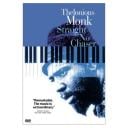
Chopin: The Women Behind the Music
 Documentary about the life of the great pianist and composer Chopin and the story of the women whose voices inspired his music.
Documentary about the life of the great pianist and composer Chopin and the story of the women whose voices inspired his music.
It is undeniable that Chopin revolutionized the nature of music composed for the piano both technically and emotionally. What is less well known is that the actual musical instrument that provided his greatest source of inspiration was the female voice.
To mark the 200th anniversary of Chopin's birth, this film follows young pianist James Rhodes on a journey to Warsaw, Paris and London to discover the real women who had such a powerful influence on the composer.
Exploring the events of Chopin's life, Rhodes encounters the singers who enchanted the composer with their voices: Konstancja, a young soprano and the object of his teenage affections; Delfina, the sexually notorious Polish Parisian emigre countess; fellow composer and opera singer Pauline Viardot; and, during the final few months of his life, the Swedish operatic superstar Jenny Lind.
Threaded through the narrative of the film is a selection of Chopin's piano music performed by Rhodes, while rising young opera singer Natalya Romaniw performs some of the signature arias that thrilled Chopin.




Chopin was always respectful of his audiences and the wonderful surroundings he played in. When you go out to share your musical talents with the world, you you are careful NOT to look like an unmade bed...It looks as if James didn't keep that in mind while performing in frayed T-shirts, etc....disappointing
Perhaps a bit excessive with the rubato in some passages (which does at least help to make his playing individual from the countless other performances of Chopin), but those people that say that the pianists' playing in the movie is sloppy or over pedaled, really don't have the first clue about playing Chopin on the piano.
A fascinating telling of the story. The music is enthralling. Thank you. God bless.
Does he HAVE to wear a tee-shirt?
These comments about rubato and bilateral rhythmic asynchrony (how's that for a term...sounds like a medical condition! Maybe that's what true musical talent is!) have been fascinating and valid. The most striking, and (to my ears) effective utilizer of that asynchrony was Vladimir Horowitz, who had real magic in his execution of that independence of each hand (I think he followed Mozart's quoted dictum better than anyone, and to more exquisite effect). I'm sure others will have other examples, but I was struck early in life by his sensually wrenching use of that device, and it stays with me as a signal feature of his talent and insight...one of many, of course!
In any case, after struggling with passionate ineptitude over some exquisite Chopin, myself (the Bb minor Scherzo in this case) I scrawled, hopelessly, at the top of the page: "Sex is for people who can't play Chopin!" (Alas, I'm indeed one who has had to settle for that second-best alternative.)
CHOPIN: The methodology ---- as a piano instructor I learned and follow through with the "left hand" that I have been reading by some of the comments referred to as 'rubato'; please review any music reference, I believe the correct application is ........OSTINATO......see Wikipedia
In music, an ostinato (derived from Italian: "stubborn", compare English: obstinate) is a motif or phrase, which is persistently repeated in the same musical voice. An ostinato is always a succession of equal sounds, wherein each note always has the same weight or stress. The repeating idea may be a rhythmic pattern, part of a tune, or a complete melody in itself.[1] Both "ostinatos" and "ostinati" are accepted English plural forms, the latter reflecting the word's Italian etymology. Strictly speaking, ostinati should have exact repetition, but in common usage, the term covers repetition with variation and development, such as the alteration of an ostinato line to fit changing harmonies or keys.
While I appreciate this pianists enthusiasm for Chopin ,his performances were everything tha Chopin abhorred.Very sloppy playing,too much pedal and an incorrect use of rubato. The rubato style that Chopin played was something he learned from MOZART.And this "tempo rubato" was the key to his style.It involves "Stretching the tempo" in THE RIGHT HAND " while kepping a STEADY TEMPO in the LEFT HAND!! Mozarts exact comment on this "tempo Rubato" was:
"In a true tempo rubato,The Left hand does not know what the right hand is doing"
Now,compare that with what THIS pianist(And countless others as well) did in his "Rubato"-----He slowed down BOTH hands in a very capricious and arbitrary way!! (Sadly,THIS is the style for "Tempo Rubato"that has become"the norm".)
And while I understand that this documentary was not really about "Chopins technique",but about "The women in his life",SOME mention should've been made as to the way Chopin succeeded in making the piano "sing",how he "emulated the female voice" beyond his "stroking the keys"----I'm shocked that none of the pianists featured in this documentary actually know about this. Playing a "tempo Rubato" by slowing BOTH hands down at the same time is a very cheap way to do the REAL THING.It takes a LOT more skill,and it sounds FAR better to keep one hand straight,and "Toy with the melody" in the other.When you do this,you emulate the sound of an orchestra(The left hand) and a singer(The right hand).Think about it:When a singer sings and "Plays with the tempo/rhythm of the melody" in a jazz setting or a pop setting,the band continues to KEEP THE TIME STEADY.
Chopin was quoted as saying that "He hated excessive ritardandos and accelerandos" Think of that comment----and then consider how most of his music is performed.
How Sad.
*sound of crickets*
Eine Kleine Nachtmusik!
(lol)
On the whole, this is a good documentary, but not one word is said in it anywhere about Chopin's use of rubato as a means of helping to convey, as much as can be, nuances such as are available in the voice which are not available through the mechanisms of the piano. I kept waiting for them to get to that, and they just never did. Having said that, I read a work not too long ago about the strong possibility of rubato having been exaggerated in importance as it applied to Chopin's own playing; that is, that he himself probably did not employ it to the degree in which it very often has been in interpretations of his work. But as someone who plays several of Chopin's pieces himself, I can tell you for a fact that the singing quality in his music would not come over nearly so well without a careful, judicious use of the technique, and that he, among other reasons, had to have intended it towards that purpose. The human voice is not a percussive instrument, which the piano obviously is. So what you are left with is how to get hammers to approximate what air and vocal cords do effortlessly, and what Chopin found out better than anyone else is that a very good way to do that is in a not too strict adherence to tempo, one hand versus the other, whereby the phrasing can take on a sense of subtle vocal dynamics (yes, I know what I said) as typically spread over the course of a melodic line, which are critical, and natural, to good singing, and obviously impossible to absolutely duplicate on his instrument. That they missed any sort of discussion about this entirely is certainly a lack, in my opinion, but I would still recommend watching it for the sensuality of the music and the story of Chopin's life.
^stalker alert.